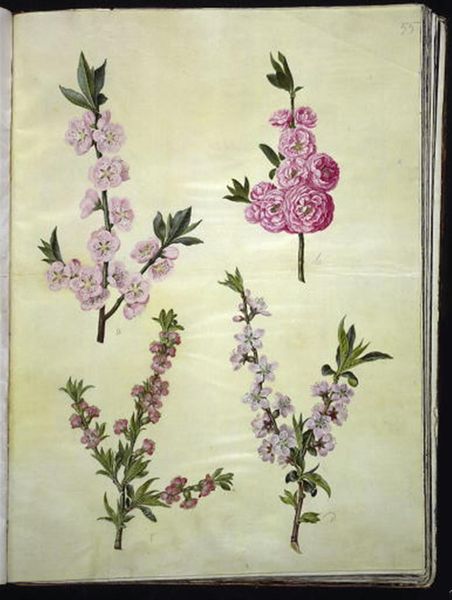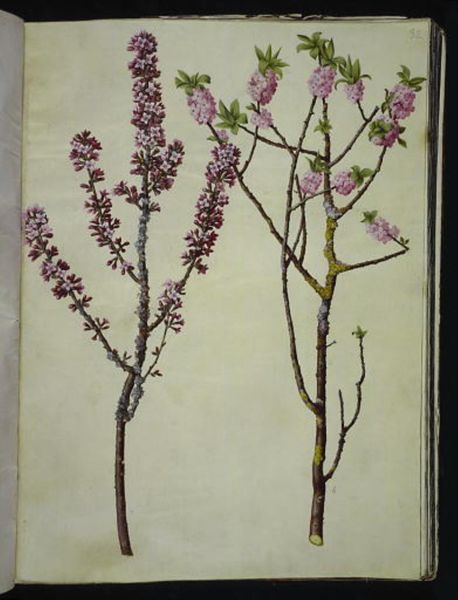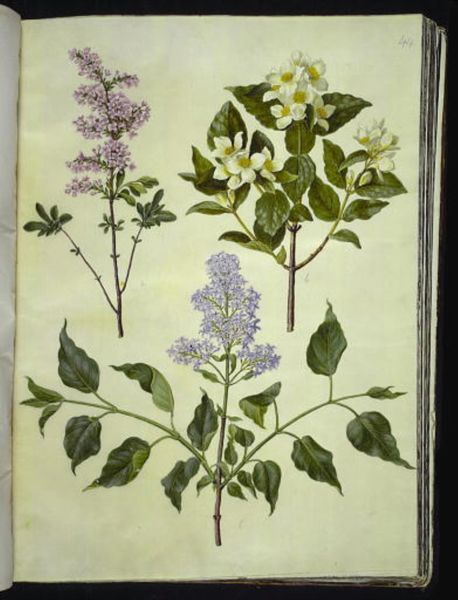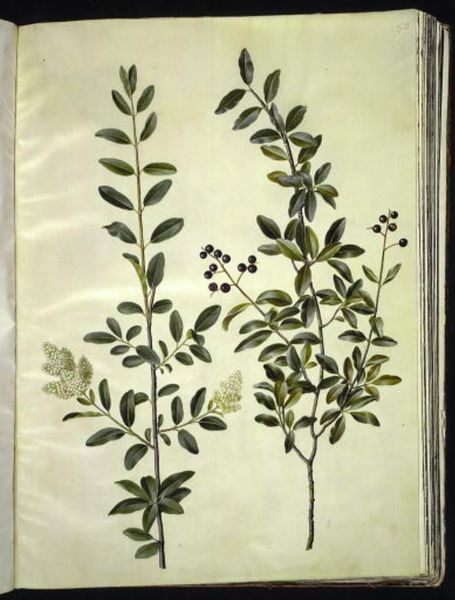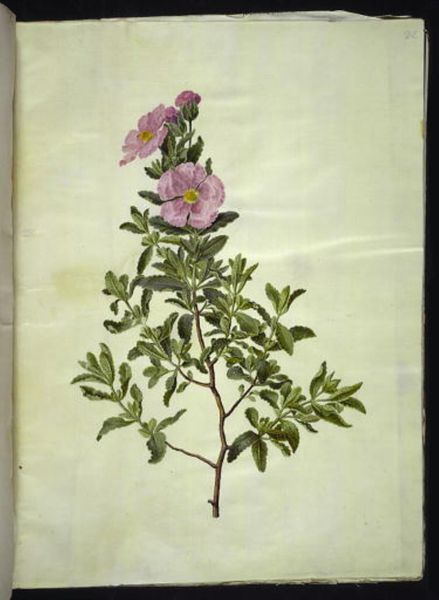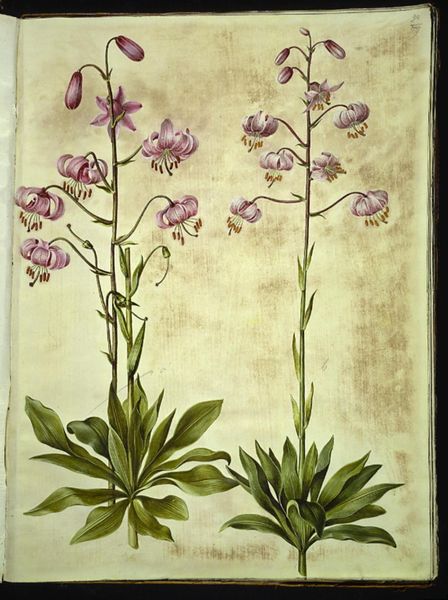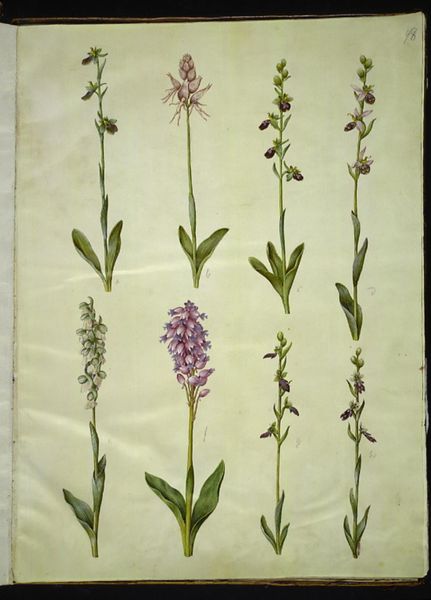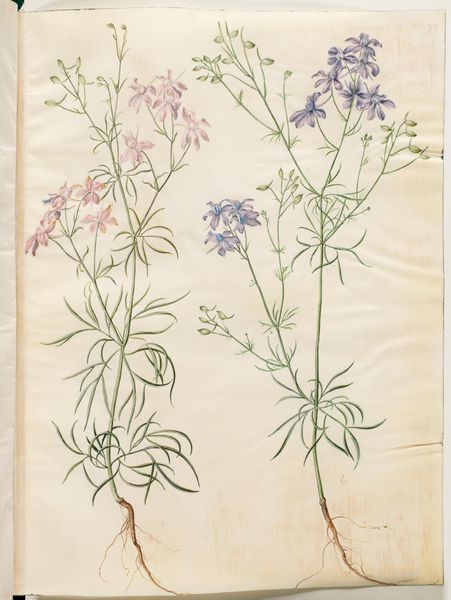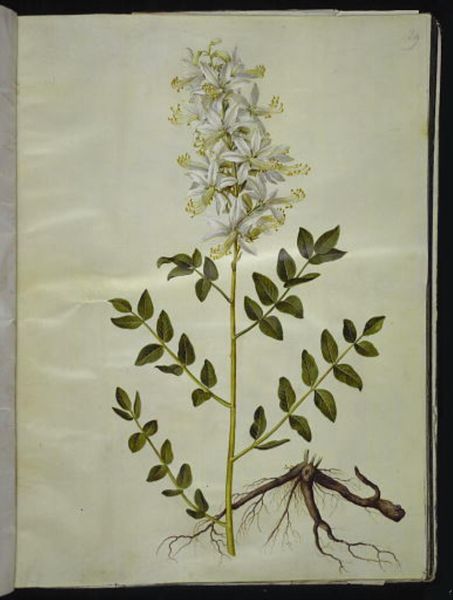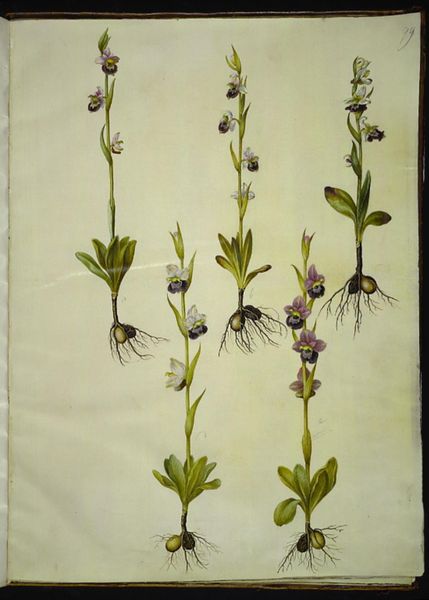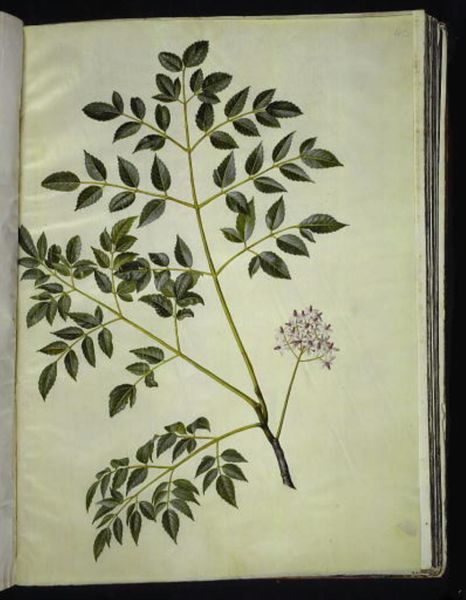
Prunus dulcis (mandel); Prunus tenella (dværg-mandel) 1649 - 1659
0:00
0:00
drawing, coloured-pencil, gouache, watercolor
#
drawing
#
coloured-pencil
#
gouache
#
watercolor
#
coloured pencil
#
botanical art
Dimensions: 505 mm (height) x 385 mm (width) (bladmaal)
Editor: So, this lovely rendering is called "Prunus dulcis (mandel); Prunus tenella (dværg-mandel)" by Hans Simon Holtzbecker. It looks like it was made sometime between 1649 and 1659, using watercolor, gouache, and coloured pencil. It feels almost scientifically illustrative, yet there's an undeniable artistry to it. What really captures your attention when you look at this work? Curator: Ah, yes! What draws me in is how Holtzbecker manages to straddle the line between scientific precision and sheer aesthetic delight. It's as if he's not just showing us almond blossoms but whispering secrets of their being. The soft blush of the petals... It's almost as if they are captured mid-dream. Have you ever felt a flower almost pulsate with a hidden life? Editor: That’s beautifully put! I hadn’t considered that aspect of hidden life. Curator: I also find myself pondering his choice of medium – watercolour, gouache, coloured pencil – all conspiring to create this ethereal effect. What does it suggest to you? Editor: I think it almost feels like a modern scientific illustration, but, of course, it’s centuries older. The subtle layering creates a remarkable sense of depth despite the relatively flat presentation, as if he's building up these blooms petal by petal. Curator: Exactly! He’s anticipating our contemporary world while rooted deeply in the observational practices of his era. Holtzbecker really encapsulates a feeling for detail while retaining sensitivity. What is your overall takeaway? Editor: I now appreciate how scientific documentation can be inherently poetic. It has certainly expanded my ideas about what botanical art can express, beyond just representation! Curator: Indeed. Sometimes, the most profound art lies hidden in plain sight, within the delicate details of the natural world. It can even spark ideas. Who knows, you might be inspired to create an entire new floral design after looking at his study!
Comments
No comments
Be the first to comment and join the conversation on the ultimate creative platform.
